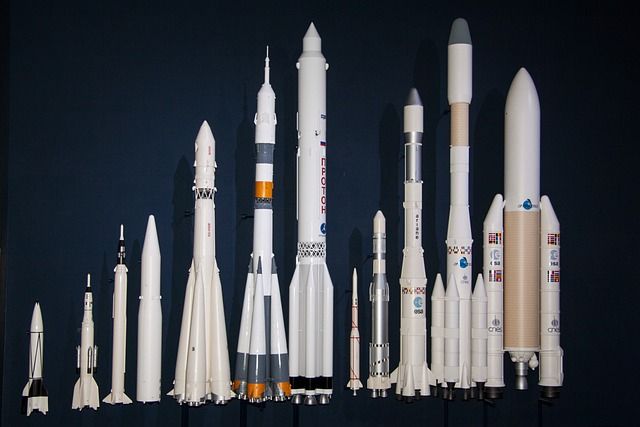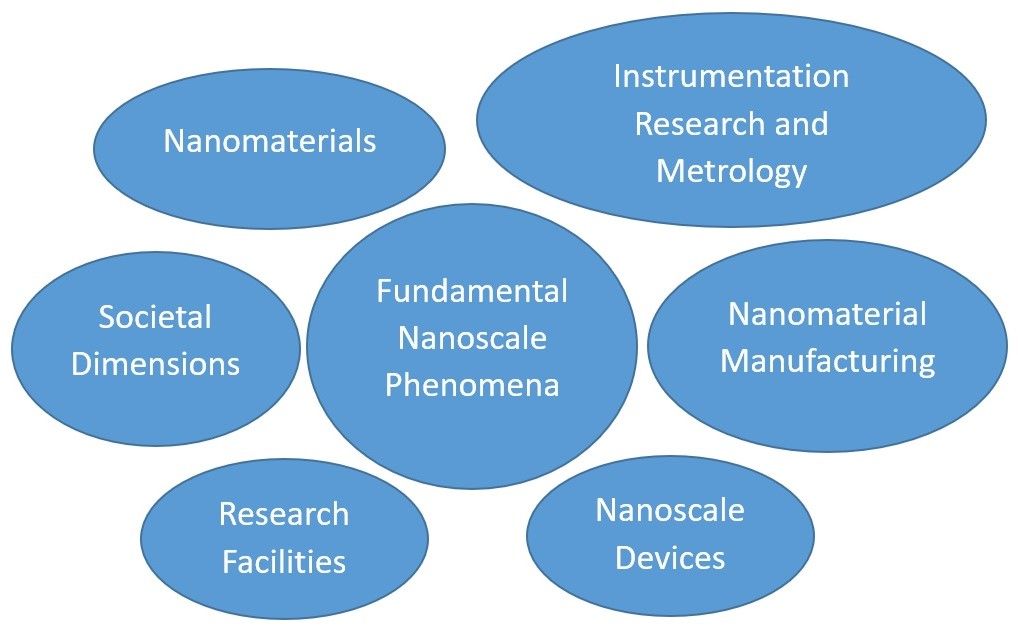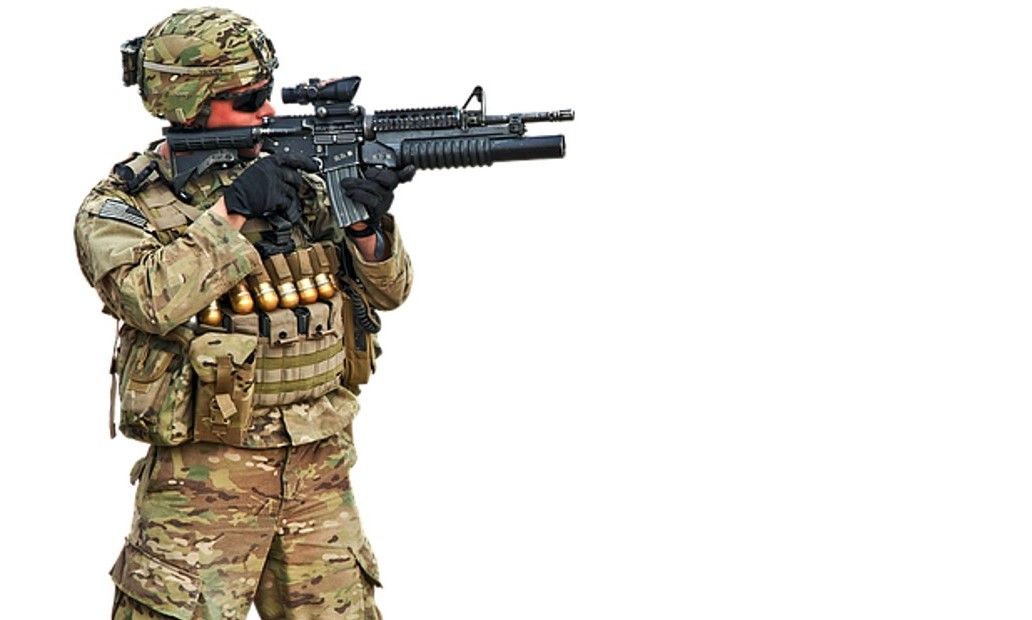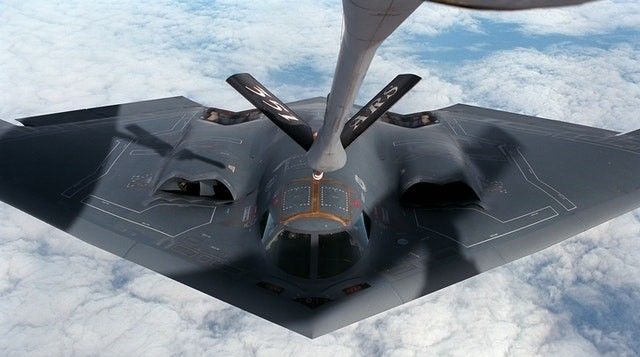Technology has always been key to winning wars. The inventions of the saddle, the long bow, the rifle, and the tank have all shaped history. They are scientific breakthroughs which have created empires and destroyed nations.
But battlefield research is more than just fighting, as it also enables technological advances outside of the military. Space exploration, for example, was launched off the back of German rocket know-how developed for the V2 ballistic missile of the Second World War.

More recently, military research has created drones, stealth aircraft, and an improved understanding of composite materials (developed for use in military hardware).
At the centre of the scientific advances of tomorrow’s armed forces will nanotechnology. As the U.S. Center for Sustainable Nanotechnology attests, “In the mid-1990s the [U.S.] Department of Defense [DoD] identified nanotechnology as one of six ‘Strategic Research Areas’. The DoD nanotechnology program is grouped into seven program component areas, which mirror those of the U.S. National Nanotechnology Initiative (NNI).”

With nanotechnology at the heart of military research, here are just some of the ways that it is poised to revolutionise the battleground.
1. Lighter and Faster Aircraft, Tanks, and Ships. Nanomaterial composites can provide added strength without extra weight. This can boost protection, increase speeds, and lower fuel consumption (thus extending operational ranges).
2. Improved Battlefield Dressings. Nanomaterials of copper and silver have been proven to have antimicrobial effects which when applied to bandages can help to keep wounds free of infection. Further studies have also shown that nanoadditives can be used in the polymers that make up modern dressings to provide antibacterial benefits.
3. Better Body Armour. Current equipment for bulletproof and blast-proof wearable protection is reaching the limit of what a soldier can carry.
“A fully equipped version of the US Army's Improved Outer Tactical Vest, complete with four ballistic plates and collar and groin protectors, can weigh almost 30lb (14kg),” notes a recent BBC report. Explaining that, “Protecting the user goes beyond catching a bullet or a piece of shrapnel. Armour also has to prevent the energy from those projectiles from being transferred to the wearer.”
Body armour may stop a bullet from piercing the skin, but the energy transferred to the body from the impact may still kill the wearer.

“The common solution is to add more polyethylene and other materials to try prevent that trauma, which of course adds weight.”
Nanomaterials are now being applied as a more effective alternative, with improved performance at stopping high-speed projectiles as well as helping to disperse impact energy.
“One example,” notes the University of Maryland’s Shreyasi Sengupta, “is in making super strong material for armor, with research exploring tungsten and carbon nanotubes for ballistic protection in personal body armor, bullet proof vests, and protective enclosures.”
4. Radar and Sonar Invisibility. Stealth ships and aircraft are being improved with the use of nanomaterials which can help ‘hide’ military hardware, such as submarines, from detection by radar and sonar systems.

5. Invisibility Cloaks. Beyond avoiding detection by radar and sonar, scientists have also used nanotechnology to create actual ‘invisibility’ with some success, as this You Tube video explains.
6. Improved Combat Wear. Research is ongoing into army uniforms to develop nanofibres in a fabric which can constrict an injury into a tourniquet. This could stop or slow down blood loss in the crucial minutes after a soldier is hit.
7. Nanosensors. Built directly into the uniform or helmet, nanosensorscan track a soldier’s vital signs as well as provide a location to medics and rescue teams.
8. Next Generation Drones. Nanotechnology is finding ways to make ever smaller electronics which could be used to build miniature drones. While their small size may limit their function to only surveillance, it is possible that a large-scale fleet of tiny (and therefore hard to shoot down) drones could provide a destructive force if enough drones were applied to a specific high value target (ammunition store, fuel depot etc.).
9. Nanomaterials Used for Robotic Body Parts. Infantry soldiers are limited in the hardware that they can use on the battlefield by the amount that they can carry (often over long distances and difficult terrain). This limit could be extended by the use of artificial muscles which can enhance body strength. Nanomaterials low weight and high strength will be key to developing this potential.
10. Improved Chemical and Biological Warfare Suits. Due to their tiny size, nanomaterials may provide a ‘second skin’ fabric that is highly breathable, yet able to repels chemical and biological agents.
11. Heated or Cooling Battle Dress. Fighting in extremes of hot and cold can severely restrict combat capability. Yet this problem could be alleviated with ongoing research into textiles embedded with nanowires and hydrogels which can keep soldiers cool in hot deserts and jungles as well as warm in frigid climates.

Clearly nanotechnology has enormous potential to improve military capability and save soldiers’ lives. While some ideas, such as invisibility, may sound like science fiction and will take decades to perfect, others such as bulletproof body armour are already in action.
How this research plays out is impossible to predict. But ultimately, nanomaterials are changing how wars are fought.
Photo credit: Intenza Fitness on Unsplash, Stefan Schweihofer from Pixabay, Hillary Clark, & Pixabay
